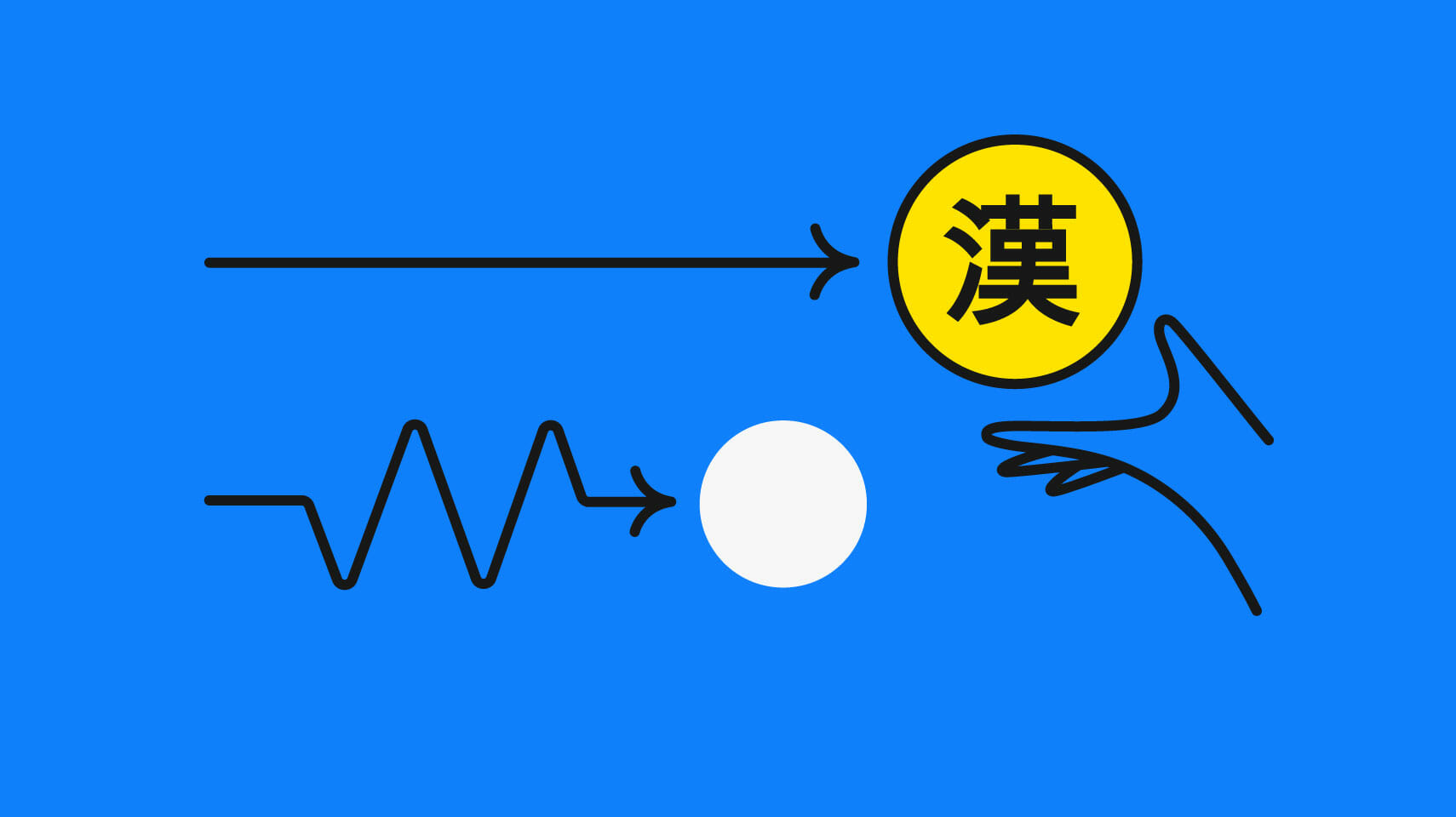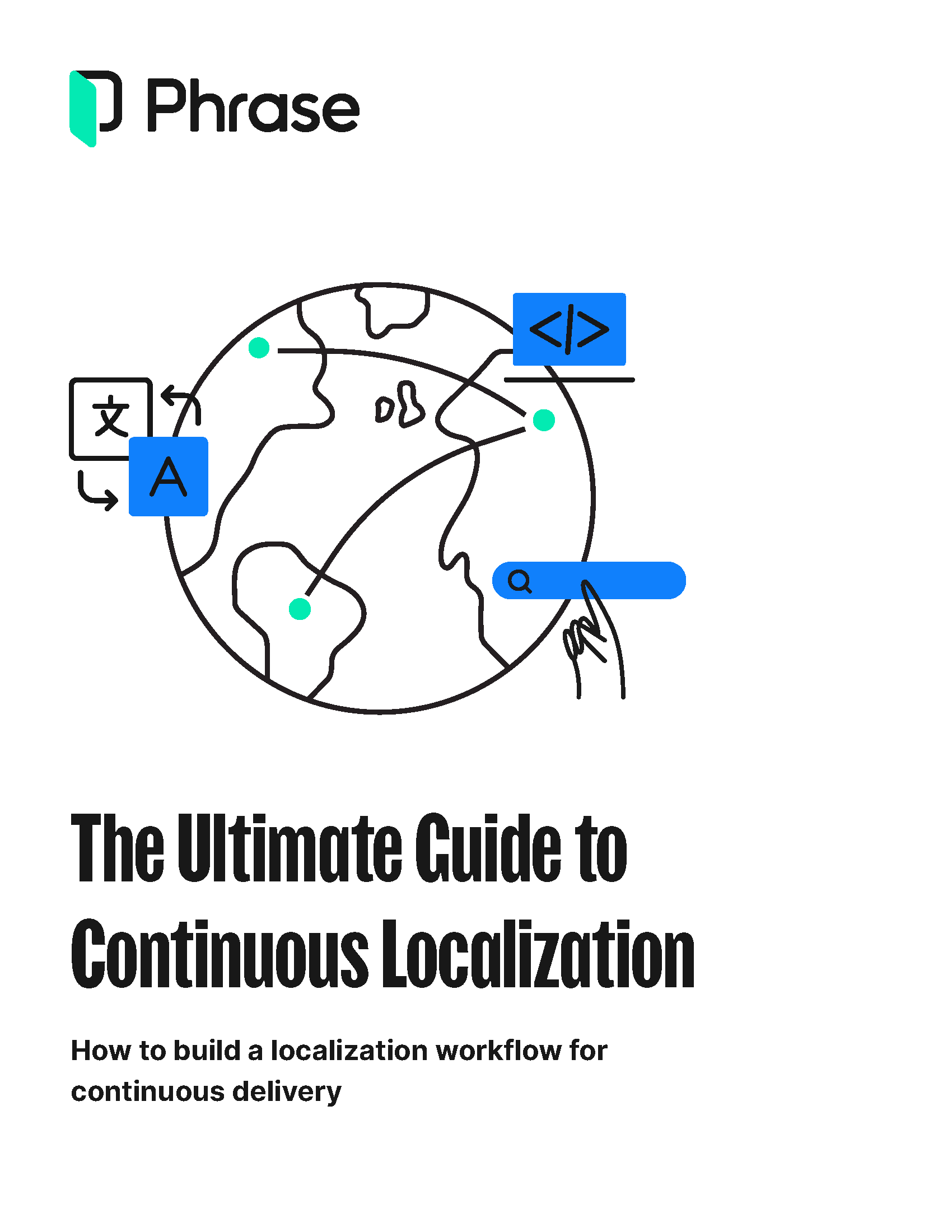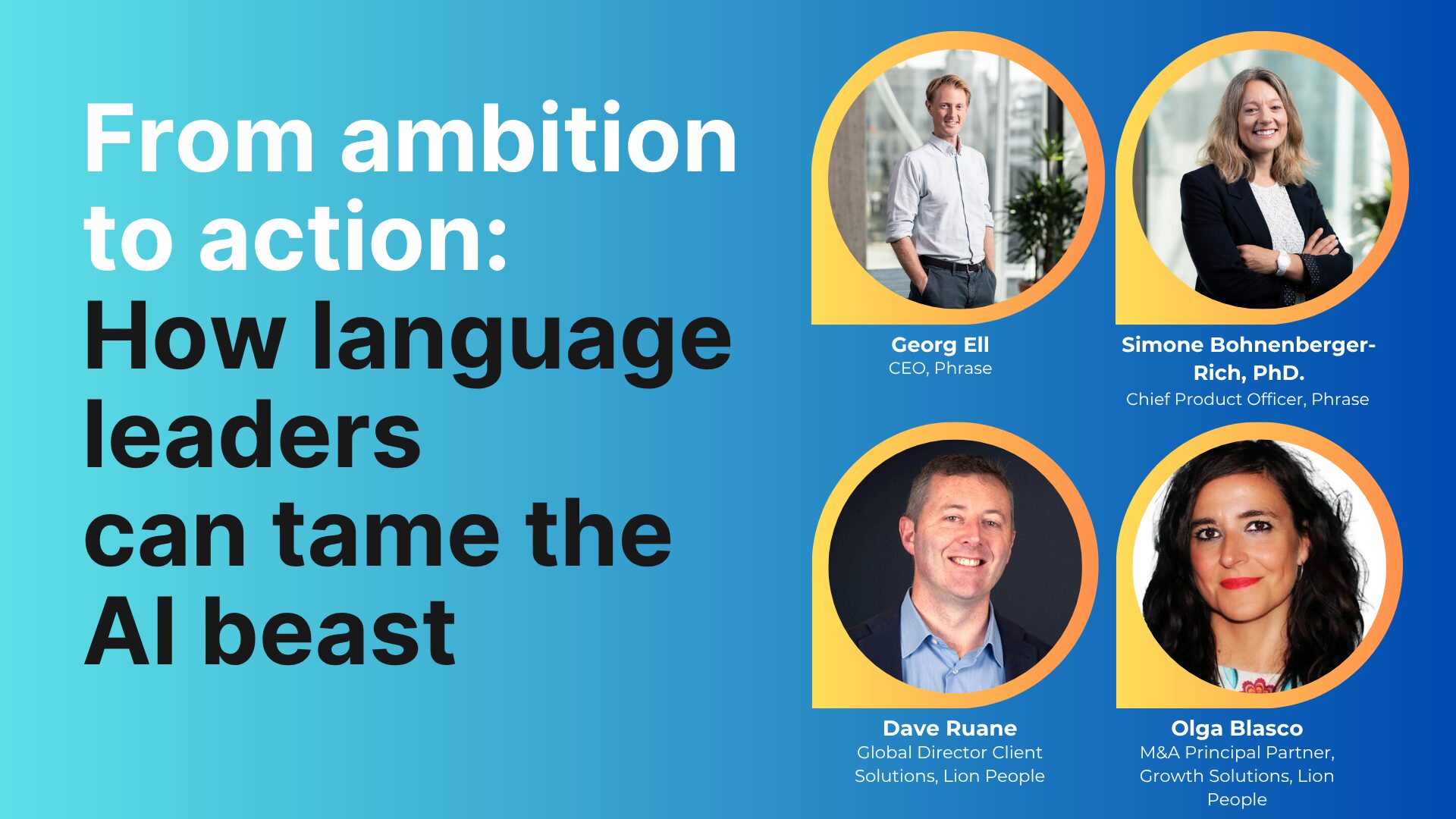Localization strategy
Continuous Localization: Keeping Translation and Development in Sync

Agile has taken the software development world by storm—for good reasons. As a methodology that emphasizes quick, continuous iterations to get products to market faster, it’s a good fit for the fast-paced digital age.
Nevertheless, even the most agile teams can hit a roadblock when it comes to delivering products for a global user base in multiple languages. Software localization is all too often approached as a separate workflow after the development cycle is completed. This is where modern localization technology can help you integrate localization workflows into agile product development from the get-go and speed up your release cycles in each target market.
To make the best use of it possible, you need a bullet-proof plan to cover everything from strategy and implementation to what makes localization technology key for successful continuous localization. Follow this guide to start making your own plan.
What is continuous localization?
Continuous localization is a best practice for integrating translation workflows into agile software development cycles to enable uninterrupted multilingual content delivery. Instead of adding a separate localization workflow to an existing agile software development process, localization teams work with content as soon as development teams make it available.
While traditional translation methods undermine agile development by superimposing waterfall structures, continuous localization aims to translate and review in step with the developers. As a result, you see less frustration among team members and better product quality.
Why traditional translation workflows don’t fit agile product development
In the waterfall product development model, where each phase follows in sequence, traditional translation workflows keep interrupting agile development. The reason is that translation often functions as a separate process. In waterfall project management, each stage of the development has to end before teams can move on to the next stage.
The notable downside of this methodology is that many projects miss their deadline. If even one stage is delayed, it has a trickle-down effect on the whole project. On top of that, making any necessary changes is difficult and time-consuming, and delaying testing until development concludes means that, if a problem arises, it isn’t easy to fix—resulting in further postponing the release.
At the same time, translation vendors have jumped on the agile bandwagon. They declare themselves to be as agile as developers and to follow similar methodologies. Yet, localization often remains disjointed from the development process—package up string resources into localization kits after each sprint. In the end, they send translation kits to a separate translation team, which forces them to keep track of many overlapping agile activity threads.
All of this causes an unfathomable increase in localization management complexity. What is even more concerning is that the initial problem still remains: Communication is out of sync, and localization managers are negotiating content questions between translators and developers. Meanwhile, each side is working on different pieces of the code.
The rise of the agile methodology in localization
Agile came as the answer to the drawbacks of the waterfall method. With the agile method of software development, the idea is to start small, iterate, and pivot until you reach a good product. Agile is a more flexible approach to project management and is focused on continually improving the product.
In an agile framework, content for localization is moved around in smaller boxes, and the localization team can work embedded in the sprint. In other words, rather than all localization happening at the end of a project, it happens in time with development.
With the agile approach, you can quickly identify and fix problems and easily adapt to changes—resulting in faster turnaround times. However, software localization processes must adapt in the background as well, and that can be a challenging transition.

Free download
How to build a localization workflow for continuous delivery
Explore how to implement continuous localization into agile product development to optimize content quality, shorten the release cycle time, and reduce costs.
How continuous localization works
Continuous delivery is a subset of agile, with the product developed in a way that makes it ready for release at any time. Developers are less keen on waiting for days or a whole week for the code to undergo a quality assurance (QA) check, localization, and testing. They usually prefer to release as soon as they are done and move on to the next item. When we call localization “continuous,” we mean that it’s an ongoing process and happens in parallel to development.
For localization teams, this change in paradigm means that they need to learn how to manage a continuous flow of content instead of larger drops, and localization management should focus on removing the long-term obstacles to this process rather than managing requests.
Put another way, localization teams needn’t ask the development team for a “string freeze” to give translators enough time to translate all the strings. Instead, they can monitor string repositories and translate text as it’s added. The end goal is to make the localization process as least disruptive as possible. Software development teams should be able to concentrate on their work and trust that localization keeps pace—and that it doesn’t interfere, except with timely and constructive feedback.
Benefits of continuous localization
Continuous integration tightly couples teams. Translators are no longer just passive recipients of localization kits. Instead, they can actively mesh with development teams. Then, the localization workflow ceases to be a disconnected process.
At the same time, it may not be necessary for every translator to take part in regular meetings. However, a localization manager can at least represent the linguists and handle the information flow between the teams. Translators and reviewers need to learn what features the developers are working on—and suggestions from the translation side must come back to the development team.
Reduced release cycles
With localization happening in parallel with development, teams can reduce the overall time to market for their products. This is especially important in the age of instant gratification and ever-shortening product life cycles.
Improved quality
When localization is integrated into the development process, it becomes an integral part of the overall product. Different teams can work together to ensure that the product is both linguistically and functionally correct from the get-go in all markets.
Faster time to market
By establishing a continuous localization process, teams can eliminate the lag time between development and localization. This means that products can become available simultaneously in all markets, rather than undergoing staggered releases over several weeks or months.
Continuous localization in action: implementation best practices
Making the shift to continuous localization can be tricky and requires diligent planning and preparation. The transition may not be perfect, and there will most likely be some bumps in the road, but there are proven best practices that can help you preempt the possible bumps for a smoother changeover:
Get ready and stay open to change
Prepare your team so that they welcome the change and not avoid it. The more you refuse the inevitability of change the harder it will bite when it comes.
Analyze your workflow
Look at your localization process as a flow of content and remove as many obstacles as you can before deploying it into production. If there are lots of difficulties, perhaps try a piecemeal approach. Find a workflow step where there is no obstacle, however small, and start there.
The evolution of technology is organic—just starting is the most important thing because it changes everyone’s mindset. Still, avoid forcing it. The agile approach still works, and it may be the solution for you.
Integrate and automate
Tight coupling is only possible if you automate as much of the translation process as possible. Sending files around and emailing people can be a waste of time and energy. Ideally, localization managers shouldn’t worry about batching up strings, transmit strings to translators manually, or reintegrate localized resources into the codebase.
Once you have eliminated all the friction in the process, make sure that both the content and queries are flowing to the relevant stakeholders without difficulty and that everybody knows what to do when something is landing on their desk.
For example, a localization management solution should allow the connection between the localization interface and query management solution like Jira via API for users to communicate and work in the respective environment. Find the right partners in a technology platform and vendors that can really understand your needs and involve them in the team as early as possible.
Foster collaborative teamwork
Aim to work with a dedicated localization team and foster collaborative teamwork. Translators would be on standby. They should at least agree to check in during designated time frames. These, in turn, need to make sense in the development cycle. A stable translation team ensures that translators gain product knowledge—and that this knowledge will remain readily accessible.
Such teams will also produce more consistent output. Translators learn what words to use in given contexts. They will then continue using those same words elsewhere. Finally, with personal familiarity, developers learn to trust feedback from the localization side. They’ll come to appreciate translators as valuable bug-spotters and consistency-checkers.
Context is key
Translating without context, especially creative content, is like putting together a pictureless puzzle. While it can be done, it may take a lot longer, and there may be many more mistakes. Provide your translators with context, and you will reduce errors, delays, and queries. Imagine, for example, how helpful it would be for a translator if you attached a GIF as context information for them to see a video game in action while localizing a string.
Commit to agile development and keep trying
Don’t give up after your first try—learn on the go, by doing, iterate, and keep looking for new ways to improve your workflow. Only if you produce content at a near-continuous pace does it make sense to have translators on standby. If agile is still new to you, here is a strong case for you to adopt agile development methodologies. It’s the precondition for reaping the rewards of continuous localization.
Continuous localization is here to stay
If the global market is your market, agile workflows have clear advantages—and it only makes sense to choose a localization method that not only avoids disrupting your development but makes it even better.
With continuous localization, instead of grafting localization onto development methods that continue operating as if localization weren’t happening, localization becomes an integral part of product development. While it may require some effort to set up, the increased awareness for all participants is a boon for overall product quality.
In any case, continuous localization has found its place in many agile global product development strategies. Keeping an open mind and being willing to change will more than likely allow you to benefit from all the improvements your new approach has to offer. Once you commit, remember to be well prepared, integrate, and automate.
If it doesn’t succeed at first, listen to feedback and iterate.
Speak with an expert
Want to learn how our solutions can help you unlock global opportunity? We’d be happy to show you around the Phrase Localization Platform and answer any questions you may have.





